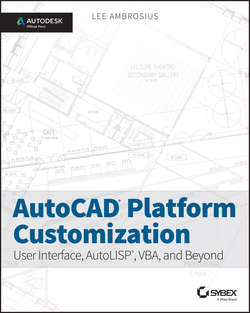Читать книгу AutoCAD Platform Customization - Ambrosius Lee - Страница 6
На сайте Литреса книга снята с продажи.
Introduction
ОглавлениеWelcome to AutoCAD Platform Customization: User Interface, AutoLISP, VBA, and Beyond. Have you ever thought about customizing AutoCAD only to think it is not for you because you're not a programmer? If so, you are not alone, as there are many people that connect customization with programming. However, customization is not the same as programming, but programming can be considered a form of customization.
While using one of the supported programming languages can be useful in implementing custom workflows and new commands, there are many simpler ways to increase your drafting efficiency in a shorter period of time. AutoCAD supports a wide range of customization features that you can learn and begin to leverage in minutes, which can led to improved CAD standards and a decrease in the amount of time it takes to complete a task.
I, like many others, even yourself most likely, have customized AutoCAD without even realizing it. Have you ever created a new layer, text style, or block? Chances are pretty great that you have created one or more of those items before. You might have even stored those items in a drawing template (DWT) file so they would be available each time a new drawing was created. While you might not have thought about these as forms of customization, they are indeed a few of the basic drawing customization features that can be used to enhance the out-of-box AutoCAD experience.
Drawing customization affects the appearance of and settings in a drawing file or drawing template (DWT) file, and should form the cornerstone of your company's CAD standards. Often when people think of customization though, they commonly think of application customization, which contains the support files that AutoCAD uses as well as the tools in the application's user interface. Application customization is not dependent on which drawing is currently open, but which user profile or workspace might be current.
